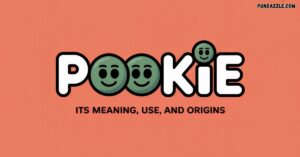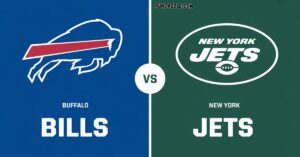Understanding the term kroner isn’t just about its role as a currency. It reflects rich cultural histories, linguistic variations, and economic significance across Scandinavia.
This post delves into the kroner meaning from various angles, including its definition, its use in slang, and its cultural origins.
Kroner as Currency
Norwegian Kroner (NOK)
The Norwegian Krone (NOK) serves as Norway’s official currency. Introduced in 1875, it replaced the rigsdaler as part of the Scandinavian Monetary Union.
Today, it consists of 1 krone, which is subdivided into 100 øre.
- Current Value: As of October 2023, the exchange rate hovers around 10 NOK to 1 USD, though this fluctuates based on market conditions.
- Coins in Circulation: The NOK features coins in denominations of 1, 5, 10, and 20 kroner, as well as notes of 50, 100, 200, 500, and 1000 kroner.
Danish Kroner (DKK)
The Danish Krone (DKK) is Denmark’s official currency. Like its Norwegian counterpart, it was introduced in 1875. The krone is also divided into 100 øre.
- Current Value: As of late 2023, the DKK is approximately 6.5 DKK to 1 USD.
- Coins in Circulation: The DKK includes coins of 1, 2, 5, 10, and 20 kroner, while notes come in 50, 100, 200, 500, and 1000 kroner.
| Currency | ISO Code | Current Exchange Rate (to USD) |
|---|---|---|
| Norwegian Krone | NOK | 10.00 |
| Danish Krone | DKK | 6.50 |
| Swedish Krona | SEK | 9.00 |
Comparison: Norwegian Krone vs. Danish Krone
While both currencies share historical roots, they differ in economic contexts and stability. The Danish Krone is often seen as a stable currency, while the Norwegian Krone can be more volatile, influenced by global oil prices due to Norway’s status as a major oil exporter.
Kroner vs. Other Currencies
Kroner vs. Euro
The kroner functions as a pegged currency in Denmark, maintaining a fixed exchange rate with the Euro through the Exchange Rate Mechanism II (ERM II).
This relationship stabilizes the DKK against the Euro but limits monetary policy flexibility.
- Implications for Trade: Both currencies are essential for trade in Scandinavia, with the Euro being a major trading partner for both Norway and Denmark.
Linguistic Insights
Kroner Meaning in English
In English, kroner typically refers to the plural form of krone, which means “crown” in both Danish and Norwegian. The kroner definition encompasses not just currency but also a symbol of national pride and heritage.
Kroner in Slang
In informal contexts, kroner often appears in slang, where it might mean money or bucks. For example, a Norwegian might say, “I need to save some kroner for my trip,” using the term in a casual, relatable way.
Also read: Maximize Your Vezgieclaptezims Signup Bonus Today
Cultural Significance
Kroner Slang Origins
The slang use of kroner reflects a broader cultural acceptance of this term, emphasizing its role in daily life. The etymology traces back to the crown symbolism, linking it to monarchy and national identity.
Kroner in Film and Pop Culture
The concept of kroner has penetrated various aspects of pop culture. Films often use the term to evoke a sense of place or authenticity.
For instance, in Scandinavian films, characters might casually mention kroner in discussions about travel or expenses, grounding the narrative in a specific cultural context.
Technical and Regional Contexts
Kroner Meaning in Electrical/Technical Context
In specialized fields such as electrical engineering, kroner might refer to currency used in transactions related to tech investments or industrial exports. This usage underlines the versatility of the term beyond just monetary value.
Kroner in Regional Languages
In languages like Hindi, kroner translates to different terms, showcasing the influence of Scandinavian culture on global languages. Such variations enrich the understanding of how currency terms adapt and evolve across cultures.
Historical Context
History of Kroner
The introduction of the Scandinavian Monetary Union in 1873 marked a significant moment in currency history, where Denmark, Norway, and Sweden aligned their currencies under a single standard. However, the union dissolved in 1914, leading to independent monetary policies.
- Key Dates:
- 1873: Introduction of the Scandinavian Monetary Union
- 1875: Norway joins the union
- 1914: Dissolution of the union
- 2003: Sweden’s referendum on joining the Euro
Current Economic Landscape
Kroner Exchange Rates and Value
As of 2025, the economic landscape for kroner remains dynamic. Fluctuations in the forex market can lead to rapid changes in exchange rates.
Investors often consider the kroner currency value as a stable option compared to more volatile currencies.
- Factors Influencing Value:
- Oil and gas exports in Norway
- Trade relations with the European Union (EU)
- Economic policies focused on inflation control and currency stability
FAQs About Kroner
What does kroner mean?
The term refers to the plural form of krone, the currency used in Norway and Denmark.
What is a kroner?
It’s a unit of currency, specifically referring to money in Denmark and Norway.
How does kroner compare to other currencies?
The kroner is often compared to the Euro and USD, with varying exchange rates based on economic conditions.
What is the historical significance of the kroner meaning?
The kroner meaning has deep historical roots, originating from the Scandinavian Monetary Union formed in 1873. The term reflects the currency’s evolution and its connection to the region’s monarchy, symbolizing national pride.
How does the kroner meaning relate to modern digital payments?
In today’s cashless economy, the kroner meaning extends to digital transactions. Payment apps like Vipps in Norway and Swish in Sweden utilize kroner, emphasizing its relevance in modern financial practices and the growing trend of digital payments.
What role does the kroner meaning play in Scandinavian culture?
The kroner meaning is not just about currency; it represents a cultural identity in Scandinavia. The term embodies elements of tradition, heritage, and the economic landscape, influencing everything from travel to trade within the region.
Conclusion
In summary, understanding kroner involves exploring its definitions, cultural contexts, and economic significance. From being a currency symbolizing Scandinavian heritage to its casual use in slang, the term encapsulates much more than just monetary value.
As we look ahead to 2025 and beyond, the kroner remains an essential aspect of Scandinavian identity, trade, and culture.
Whether you’re traveling through Denmark, Norway, or Sweden, knowing about the kroner will enrich your experience and understanding of the region’s vibrant history and economy.
Read more knowledgeable blogs on Pun Dazzle

Philipp Engel is a passionate writer and pun lover dedicated to spreading laughter and joy through words. As the creator and author of the website Philipp Engel, he delivers a delightful mix of puns, jokes, and playful humor that entertains readers of all ages. With a sharp wit and a deep love for language, Philipp aims to brighten every visitor’s day with clever wordplay and a smile, making humor a universal language that connects people everywhere.








